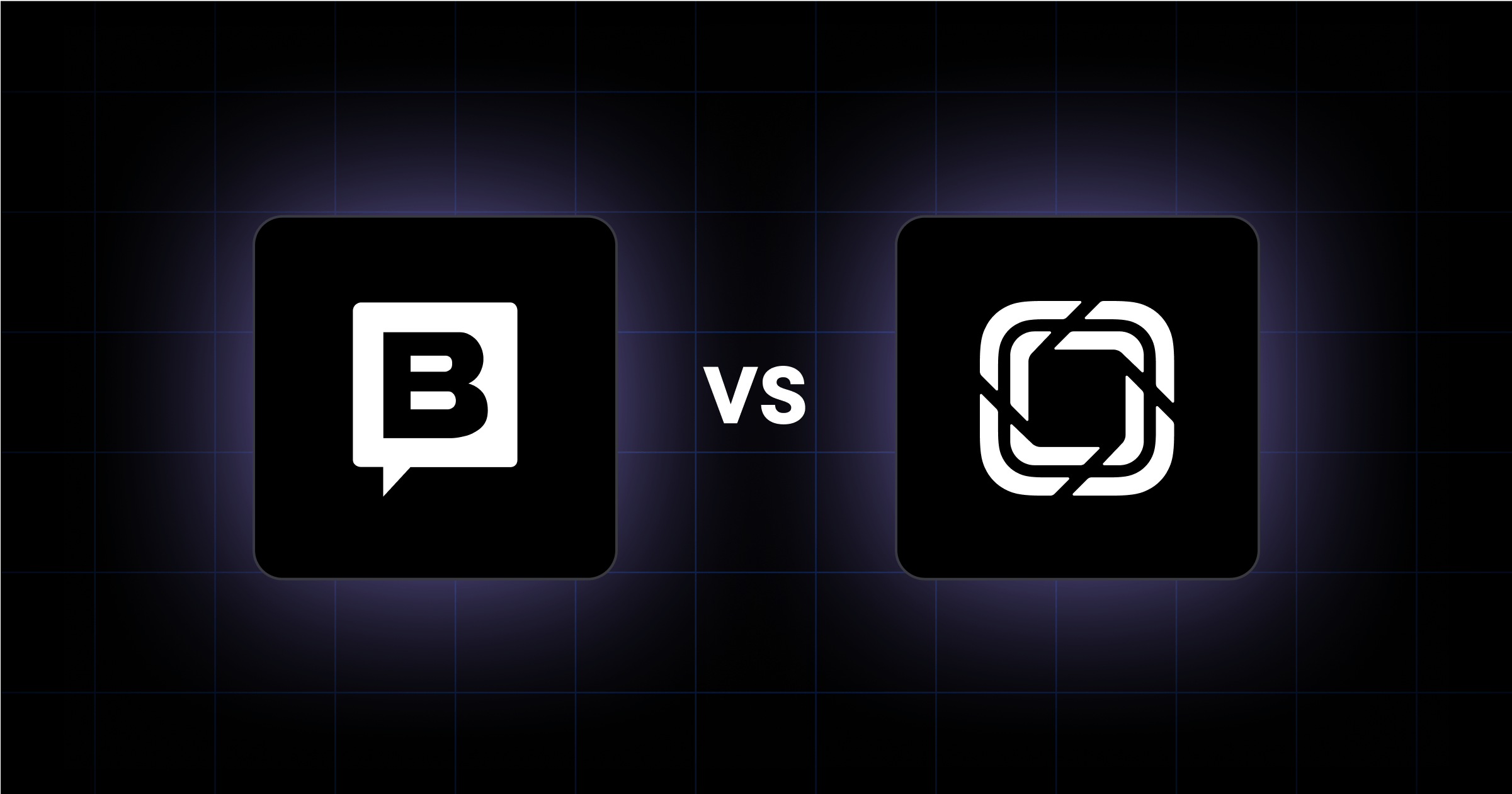With so many CMS options out there, it’s easy to get overwhelmed by the choices.
You want to make sure your efforts drive real results and don’t just drain your budget. Understanding the benefits can help you make an informed decision.
Let’s break down why Builder SEO might be the right move for your business.
Benefits of Builder SEO for Enterprises
It’s easy to feel lost in the sea of SEO options, but Builder SEO offers clear advantages that can make a tangible difference for your business.
Increases brand visibility in search results. When you optimize your site with Builder SEO, your brand appears more frequently in search results. This means more eyes on your business, which can lead to increased brand recognition and awareness. For more insights, check out these enterprise website design best practices.
Drives qualified organic traffic at scale. Builder SEO helps attract visitors who are actively searching for what you offer. This targeted approach brings in high-quality traffic, increasing the likelihood of conversions and sales.
Improves user experience and engagement. A well-optimized site isn’t just about search engines; it’s also about the user. Builder SEO enhances site speed, mobile responsiveness, and overall usability, making it easier for visitors to navigate and engage with your content. Discover more SaaS website best practices to enhance your SEO efforts.
Builds brand authority and trust. Consistently appearing in top search results positions your brand as an authority in your industry. This credibility can build trust with potential customers, making them more likely to choose your products or services over competitors.
Delivers strong ROI compared to paid channels. While paid advertising can be effective, it often requires a significant ongoing investment. Builder SEO, on the other hand, provides lasting results that continue to drive traffic and leads long after the initial investment, offering a higher return on investment over time.
How Does Builder SEO Work?
Navigating the technical aspects of SEO can be daunting, but understanding the process can alleviate some of those concerns.
Ensure search engine access to content
First, you need to make sure search engines can access and index your content. This involves checking your robots.txt file to ensure it doesn’t block important pages. Use tools like Google Search Console to identify and fix any crawl errors. Properly configured sitemaps help search engines understand your site structure and find all your pages. Understanding programmatic SEO can also enhance your strategy.
Optimize page titles, meta descriptions, header tags
Next, focus on optimizing your page titles, meta descriptions, and header tags. Page titles should be concise and include primary keywords. Meta descriptions need to be compelling and informative, encouraging users to click through from search results. Use header tags (H1, H2, H3) to structure your content logically, making it easier for both users and search engines to understand. Learn more about building a content ecosystem to support your SEO efforts.
Improve site architecture and internal linking
A well-organized site architecture improves user experience and helps search engines crawl your site more efficiently. Ensure your site has a clear hierarchy, with main categories and subcategories. Use internal linking to connect related content, which helps distribute page authority and makes it easier for users to navigate. This also signals to search engines which pages are most important.
Create valuable, keyword-rich content
Content remains king in SEO. Create content that addresses the needs and interests of your audience. Incorporate relevant keywords naturally throughout your content to help search engines understand what your pages are about. Use tools like keyword planners to identify high-value keywords and integrate them into your content strategy. Regularly update your content to keep it fresh and relevant. Consider how to level up your B2B blog strategy for better results.
Earn high-quality backlinks from relevant sites
Backlinks from authoritative sites signal to search engines that your content is trustworthy and valuable. Focus on earning backlinks from sites relevant to your industry. This can be achieved through guest blogging, partnerships, and creating shareable content. High-quality backlinks improve your site’s authority and can significantly boost your search rankings.
7 Builder SEO Strategies for Enterprise Websites
The sheer scale of enterprise websites can make SEO feel like a monumental task, but breaking it down into manageable strategies can help.
1. Implement Proper Technical Setup
Start with a solid technical foundation. Ensure your site loads quickly, is mobile-friendly, and has a secure HTTPS connection. Use tools like Google PageSpeed Insights to identify and fix performance issues. Make sure your site is crawlable by search engines, with a clean robots.txt file and a comprehensive XML sitemap. Address any crawl errors promptly to prevent indexing issues.
2. Conduct Keyword Research at Scale
Identify the keywords most relevant to your business. Use tools like Google Keyword Planner, Ahrefs, or SEMrush to find high-volume, low-competition keywords. Focus on long-tail keywords that match user intent. Organize keywords into clusters based on themes or topics. This helps create a roadmap for content creation and ensures you cover all relevant search queries.
3. Optimize On-Page Elements
Ensure each page on your site is optimized for search engines. Use unique, keyword-rich titles and meta descriptions. Structure content with header tags (H1, H2, H3) to improve readability. Include keywords naturally within the content, but avoid keyword stuffing. Optimize images with descriptive alt text and compress them to improve load times. Use schema markup to help search engines understand your content better.
4. Create Topic Clusters and Pillar Pages
Organize your content into topic clusters with pillar pages. A pillar page covers a broad topic in-depth and links to cluster content that explores subtopics. This structure helps search engines understand the relationship between content pieces and improves your site's authority on specific topics. Regularly update pillar pages to keep them relevant and comprehensive.
5. Improve Internal Linking
Use internal links to connect related content. This helps distribute page authority and makes it easier for users to navigate your site. Ensure each page links to relevant pillar and cluster content. Use descriptive anchor text to provide context for users and search engines. Regularly audit your internal links to identify and fix broken links.
6. Earn Relevant, High-Authority Backlinks
Focus on earning backlinks from reputable sites in your industry. Create high-quality, shareable content that others want to link to. Reach out to industry blogs, news sites, and influencers for guest posting opportunities. Use tools like Ahrefs to identify sites linking to your competitors and target them for backlink opportunities. Monitor your backlink profile to ensure you maintain a healthy link profile.
7. Measure, Analyze and Iterate
Regularly track your SEO performance using tools like Google Analytics and Search Console. Monitor key metrics such as organic traffic, bounce rate, and conversion rate. Analyze which strategies are working and which need adjustment. Use A/B testing to experiment with different approaches. Continuously refine your SEO strategy based on data and insights to achieve better results.
Common Builder SEO Challenges and Solutions
Managing SEO for large enterprise websites can be a complex task, but knowing the common challenges and solutions can ease the process.
Coordinating SEO across large websites and teams
Managing SEO for large websites involves multiple teams, each with its own priorities and workflows. This can lead to fragmented efforts and missed opportunities. To coordinate effectively, establish clear communication channels and centralized documentation. Use project management tools to track tasks and deadlines. Regular meetings ensure everyone stays aligned and can address issues promptly. Designate a central SEO lead to oversee the strategy and ensure consistency across all teams. Conduct a B2B competitor analysis to benchmark your efforts.
Maintaining consistency in optimization
Consistency in SEO practices across a large site is challenging. Different teams may apply varying standards, leading to uneven optimization. Standardize SEO guidelines and best practices. Create a comprehensive SEO playbook that outlines procedures for keyword usage, meta tags, internal linking, and content updates. Regular audits help identify inconsistencies and areas for improvement. Training sessions for all relevant teams ensure everyone understands and follows the same optimization practices.
Balancing user experience and search engine needs
SEO strategies must balance user experience with search engine requirements. Over-optimizing for search engines can harm user experience, while focusing solely on users might neglect SEO. Use data-driven insights to find this balance. Conduct user testing to understand how visitors interact with your site and identify pain points. Simultaneously, use SEO tools to ensure your site meets search engine guidelines. Prioritize changes that enhance both user experience and SEO performance, such as improving site speed and mobile responsiveness.
Scaling content creation and link building
Creating and promoting content at scale requires significant resources and coordination. Develop a content calendar that aligns with your SEO strategy and business goals. Use content management systems to streamline the creation, approval, and publishing processes. For link building, identify high-authority sites relevant to your industry and build relationships with their editors. Guest blogging, partnerships, and digital PR can help earn valuable backlinks. Automate outreach and follow-up processes to manage large-scale link-building campaigns efficiently. Learn how to scale content production effectively.
Measuring ROI of enterprise SEO efforts
Quantifying the return on investment (ROI) for SEO can be complex, especially for large enterprises with multiple goals and metrics. Use analytics tools to track key performance indicators (KPIs) such as organic traffic, conversion rates, and keyword rankings. Set up custom dashboards to visualize these metrics and identify trends. Regularly review and analyze data to understand the impact of your SEO efforts. Adjust your strategy based on these insights to maximize ROI. Communicate results to stakeholders to demonstrate the value of your SEO initiatives.
Best Practices for Implementing Enterprise Builder SEO
Even with all the benefits, getting started with Builder SEO can feel overwhelming, but following best practices can make the process smoother.
Get buy-in from key stakeholders
To successfully implement Builder SEO, you need support from key stakeholders. Present clear data and case studies that show the benefits of SEO. Highlight how improved search rankings can drive more traffic and revenue. Make sure everyone understands the long-term value of investing in SEO. This support will help secure the resources and cooperation needed for your SEO initiatives.
Assign dedicated SEO resources and budget
SEO requires specialized skills and consistent effort. Assign a dedicated team or individual to manage your SEO strategy. Allocate a specific budget for SEO activities, including tools, content creation, and link-building efforts. Having dedicated resources ensures that SEO tasks are prioritized and executed effectively.
Integrate SEO into existing workflows
SEO should not be an afterthought. Integrate SEO best practices into your existing workflows. Train your content creators, developers, and marketing teams on SEO principles. Make SEO a part of the content creation process, from planning to publishing. This integration ensures that all aspects of your site are optimized for search engines from the start.
Prioritize based on impact and effort
Not all SEO tasks are equal. Prioritize actions that offer the highest impact for the least effort. Use data to identify which areas need the most attention. Focus on quick wins like optimizing high-traffic pages and fixing technical issues. This approach helps you see results faster and build momentum for more complex tasks.
Automate and templatize where possible
Automation can save time and reduce errors in your SEO efforts. Use tools to automate tasks like keyword tracking, site audits, and reporting. Create templates for common SEO tasks such as meta descriptions and content outlines. Automation and templates ensure consistency and free up your team to focus on more strategic activities.
Monitor, report and communicate results
Regular monitoring and reporting are vital for tracking the success of your SEO efforts. Use analytics tools to measure key metrics like organic traffic, bounce rates, and conversion rates. Create regular reports to share with stakeholders. Communicate your results clearly, highlighting both successes and areas for improvement. This transparency keeps everyone informed and helps maintain support for your SEO initiatives. Explore new strategies for website traffic to keep your team updated.
Is Builder SEO Worth It for Enterprises?
Deciding where to allocate resources is always a tough call, but understanding the long-term benefits of Builder SEO can make the decision easier.
Organic search is a top traffic and revenue driver. When you optimize your site for search engines, you attract visitors who are actively looking for your products or services. This targeted traffic is more likely to convert, making organic search a key component of your digital strategy.
SEO delivers compounding long-term value. Unlike paid advertising, which stops driving traffic once you stop paying, SEO continues to bring in visitors over time. As your site gains authority and ranks higher for more keywords, the benefits of your SEO efforts grow exponentially.
Enterprises have resources to invest in SEO. Large companies can allocate budgets and teams to focus on SEO. This allows for comprehensive strategies that cover technical SEO, content creation, and link building. With the right resources, you can implement robust SEO campaigns that drive significant results.
Builder makes enterprise SEO easier to implement. Builder.io provides tools that simplify the SEO process. From optimizing page titles and meta descriptions to improving site architecture, Builder.io helps you ensure your site is search engine-friendly. This ease of implementation allows your team to focus on creating high-quality content and earning backlinks.
SEO helps enterprises stay competitive online. In a crowded digital marketplace, appearing at the top of search results sets you apart from competitors. Effective SEO strategies ensure your brand remains visible and relevant to your target audience. This visibility is crucial for maintaining a competitive edge.
The ROI of enterprise SEO can be significant. Investing in SEO yields high returns over time. The initial costs of optimizing your site and creating content are offset by the long-term benefits of increased organic traffic and higher conversion rates. With a well-executed SEO strategy, you can achieve substantial growth and profitability. For more insights into budgeting, review B2B website development costs.
See the Webstacks difference: Schedule a brief discovery call today. Let us show you how our expertise in composable web design and strategic planning can elevate your digital presence. Visit Webstacks to get started.




